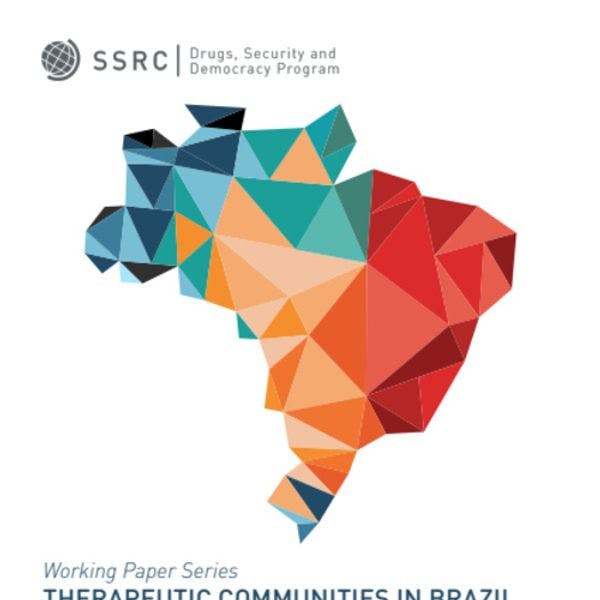SSRC
Therapeutic communities in Brazil
By Taniele Rui & Mauricio Fiore / SSRC
Spread across Brazil and attaining an unparalleled political force, therapeutic communities are as inescapable in the debate on drug policy as they are complex to define. Although they are not a Brazilian creation, they have been operating in that country for decades, and their dissemination intensified in the 1990s. In 2011, they were officially incorporated into Brazil's Psychosocial Care Network (Rede de Atenção Psicossocial, or RAPS). Since then, therapeutic communities have been at the center of public debates about their regulation; about how they should—or even if they should—be a part of the healthcare system; about the level of supervision to which they should be submitted; about their sources of funding, particularly whether or not they should have access to public funding; and, most importantly, about the quality of the services they offer and the many reports of rights violation that have been made public.
However, a well-informed public debate can only flourish if the available information is based on sound evidence. The SSRC’s Drugs, Security and Democracy Program is concerned with the policy relevance of the research projects it supports, and the debate around therapeutic communities in Brazil points to a clear need for impartial research that addresses different cross-cutting aspects of this topic in its various dimensions: legal, regulatory, health, and observance of human rights, among others.
It is in this context that we publish this working paper series on therapeutic communities in Brazil. The eight articles that compose this series offer a multidisciplinary view of the topic, expanding and deepening the existing literature and offering powerful contributions to a substantive analysis of therapeutic communities as instruments of public policy. Although they can be read separately, it is as a whole that the strength of the eight articles that make up this series becomes more evident. Even though they offer different perspectives, they are complementary works in—and already essential for—delineating and understanding the phenomenon of therapeutic communities in Brazil.
